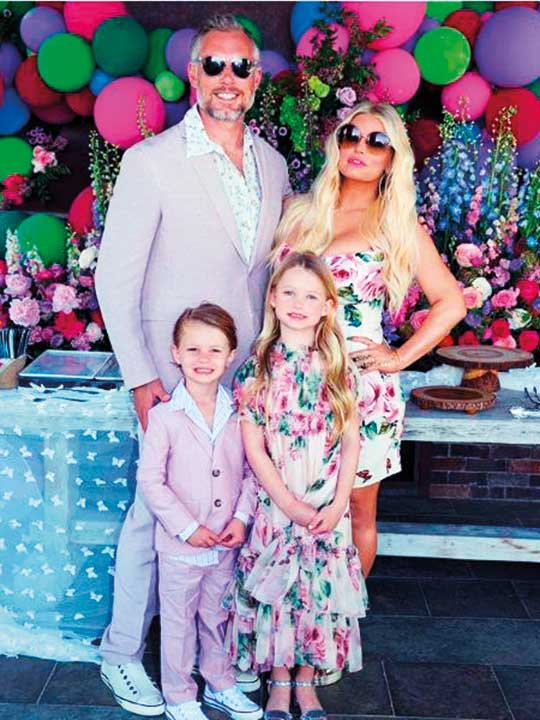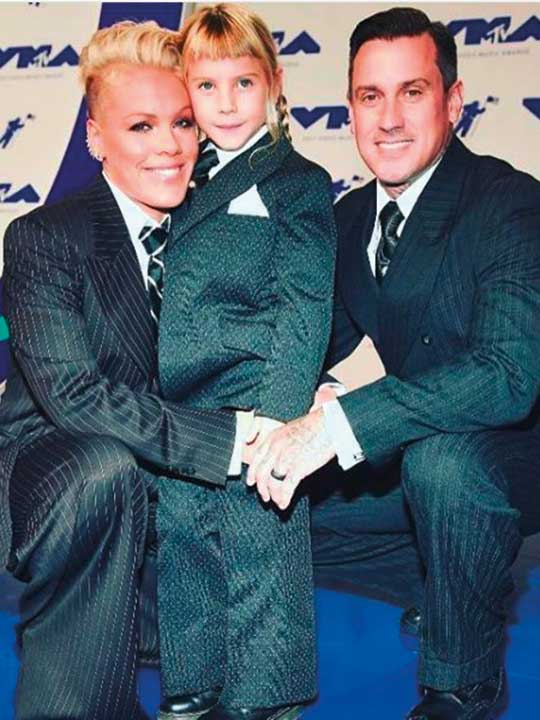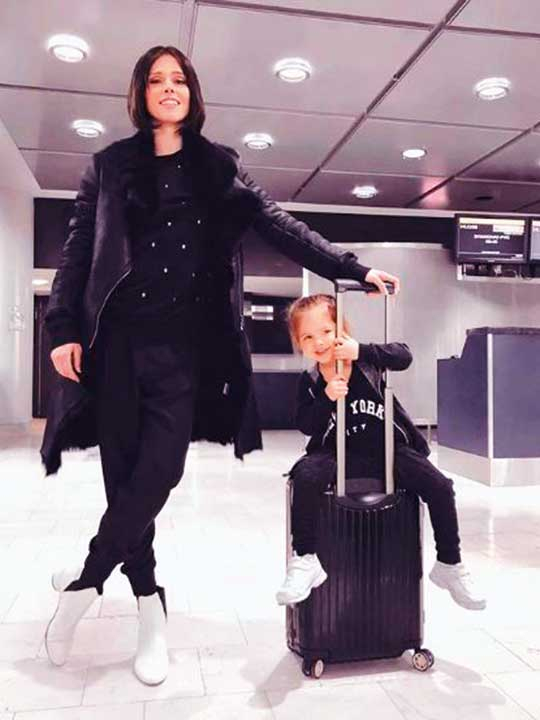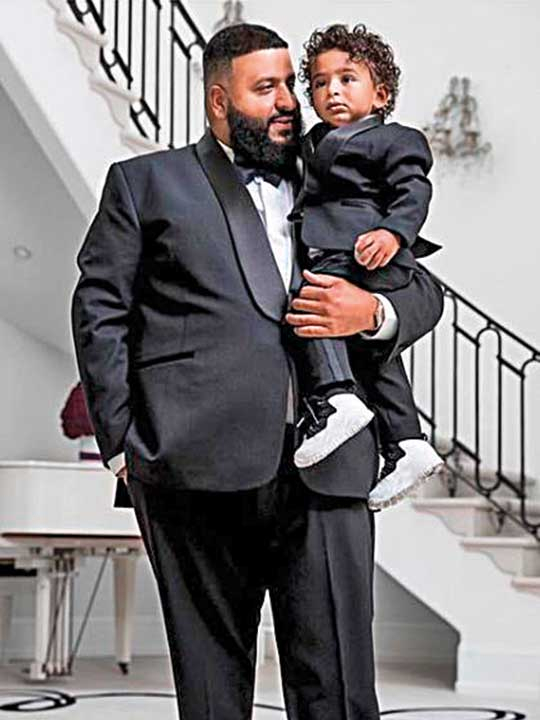
Growing up in the mid-80s, sartorial diktats were such that I spent most of my time figuring out how not to dress like my mother. It was possibly no bad thing given that this was suburban Weybridge, rather than the tree-lined boulevards of Saint Germain.
Oh my, how times have changed. You can’t move on social media for mini-me dressing. In an era where middle-class mothers and daughters might actually go and get a piercing together is it any wonder that the luxury childrenswear market is booming?
According to market research provider Euromonitor, it’s forecast to reach $6.6 billion (Dh24.2 billion, £5.1 billion) by 2018 — that’s a lot of parents dashing out to bag a pair of toddler-sized £400 Gucci loafers to match their own. Kim Kardashian West is spearheading its recent popularity, although what you make of her outing with five-year-old North, shimmying in near-matching sequin silver dresses by the French label Vetements, is a moot point. Beyonce is at it too, matchy-matchy with her daughter, Blue Ivy, in their floral dresses from Dolce & Gabbana.
For many designer brands, it’s the chance to offer the whole family the same look. Fancy a serving of Alessandro Michele’s colourful mash-up at Gucci? Well, now you can also indulge your eight-year-old; with the advent of designer homewares, she can even match the crockery.
Brands such as Dolce & Gabbana incorporate similar styles, fabrics and design into their childrenswear. So, too, do Fendi, Balenciaga, Burberry and Dior. It extends even to more contemporary price points: new to market is an army of mini-mes from American label Love Shack Fancy, while ex-Voguette turned kaftan designer, Pippa Holt, has introduced a collection of diminutive versions of her Mexican jet-setting kaftans.
Domenico Dolce believes that today, “more children are interested in dressing up as their favourite adults. It could be their parents or an older stylish cousin or celebrity. In other words they demand a mini version of adult clothing: shorter dresses, polka dot or animal patterns, fancy shoes.”
Undoubtedly, this trend will be disturbing for many: at one level peddling Lolita-esque fantasies, or otherwise the syrupy idea that grown women actually plan matching outfits. It is just as nauseating as the thought of mothers wanting to hang out with their children as “friends” or, worse still, go clubbing together.
Parading a younger version of yourself also smacks of a certain vanity (and desperation) and yet, accents of the same style can make sense. Newer brands such as Belle Enfant or the Japanese brand OWA (born as an antithesis to the sugary, mass-produced childrenswear out there) produce sophisticated clothes in a non-garish colour palette, certainly sans the Disney pink, that feel fashion forward and are likely to complement a mother who dresses in understated, hard-to-place niche labels.
One thing that retailers, shoppers and fashion designers fervently agree on is that social media, specifically Instagram, has a lot to answer for in the past few years. It’s a no-brainer: photogenic child dressed in cute or on-trend outfit next to a glamorous mum equals photo-op made in heaven.
I have always been a little eye-rolly about mini-me dressing. What is wrong with women (although it’s increasingly men, too), who have the time to do this? I make Herculean efforts to not live my life through my children, to retain my sense of self, and yet I know subconsciously — or perhaps it isn’t that subconscious at all — that I tonally colour coordinate with my three children every time we step out the front door.
Tribal needs
Yes, it is ridiculous — we don’t expect to be photographed and I rarely (if ever) take pictures — but somehow it feels a bit neater and also if I’m honest with myself, a little tribal.
Alex Eagle, founder of her eponymous design emporium, agrees that it’s often a happy coincidence that she, too, is swaddled in layers of navy and cream cashmere — although admittedly she says she never looks as cute as her children.
“It’s not top of my priority list to coordinate as I am usually so time-poor, but I think if it makes you feel good, and creates a beautiful visual moment, then why not?” says Anna Bromilow, founder of childrenswear e-tailer Little Circle, ex-fashion director of Tatler and mother to three girls.
This is not a trend that is confined to pre-schoolers either: now that 60 is the new 40, there are older mother-and-daughter combos at it as well. Carole Middleton and the Duchess of Cambridge share a preference for slim-fitting tailored dresses, head-to-toe pastels, off-duty jeans and smart blazers, eyeliner techniques and even hair styles. This week, three generations of Redgrave women wowed us on the red carpet in an arresting tableau of similar monochromatic column silhouettes. Genetics obviously play their part too because, often, mothers and daughters have the same colouring, shape and frame.
“Kitty and I share the same taste,” admits Lisa Armstrong, head of fashion on this paper. “I’m not saying we’d wear identical items, but we definitely both veer towards silk blouses, skirts and tailoring.”
'Matte' look
Meanwhile, I’m allergic to anything sparkly or covered in glitter. Living under the same roof, is it any wonder that my nine-year-old told me the other day (albeit eyeing up the sweetie jar) she likes outfits that are “matte”?
So is it possible to pull off mother-daughter dressing in a way that feels a little cooler? Eva Karayiannis, founder of the fashion label Caramel, which was originally conceived as a childrenswear brand, believes the key to getting it right is to ensure that items are age-appropriate.
“You can be wearing items in the same print but a grown woman would look ridiculous wearing a little girl’s smocked dress (which is cut too narrowly on the chest) and, consequently, it wouldn’t be right for a small child to wear something so obviously adult-looking.” The general consensus from my vox pop was that accents of the same pattern, print or style of garment were far more agreeable than identikit outfits.
Caramel is one of a growing number of childrenswear labels (along with Bobo Choses and Fred & Noah) to have launched adultwear. And while the response has been impressive, Karayiannis has also been careful to position it as a range in its own right.
Increasingly, however, it is fathers and sons who are taking on the mantle. Recently, model and presenter Vogue Williams asked the childrenswear designer Rachel Riley to make a matching shirt for her husband Spencer to wear on a holiday. After posting a picture of father and son on Instagram Stories, Riley was inundated with enquiries.
Lulu Rayne, shoe buyer at Step2wo at Harvey Nichols, observes that this trend is far more popular. “Fathers and sons want to look like each other, whereas girls, particularly when they get older, mostly want to look different to their mothers.”



















